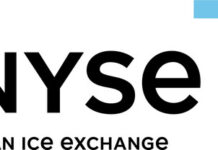Semiconductor in Military and Aerospace Market
OREGAON, PORTLAND, UNITED STATES , September 7, 2023/EINPresswire.com/ — Allied Market Research published a report, titled, “Semiconductor in Military and Aerospace Market by Component (Sensors, Memory, Opto Electronics, Logic, Micro, Analog, and Others), Technology (Surface Mount Technology and Through-Hole Technology), End Use (Military and Aerospace), and Application (Communication, Navigation, Global Positioning System (GPS) and Surveillance, Imaging, Radar and Earth Observation, Munitions, and Others): Global Opportunity Analysis and Industry Forecast, 2021–2031”. According to the report, the global semiconductor in the military and aerospace industry is expected to generate $6.3 billion in 2021 and is anticipated to generate $12.9 billion in 2031, witnessing a CAGR of 7.6% from 2022 to 2031.
𝐃𝐨𝐰𝐧𝐥𝐨𝐚𝐝 𝐑𝐞𝐪𝐮𝐞𝐬𝐭 𝐒𝐚𝐦𝐩𝐥𝐞 𝐏𝐚𝐠𝐞𝐬 – https://www.alliedmarketresearch.com/request-sample/47855
Factors such as rise in military expenditure, rise in aircraft upgradation and modernization programs, and use of radiation tolerant semiconductor components are expected to drive the market growth. However, scarcity of semiconductors is the factor that hampers the market growth. Furthermore, growth in investments by several governments in space technology, and defense modernization are the factors expected to offer lucrative opportunities for the market growth.
North America is looking forward to strengthen its domestic semiconductor manufacturing industry, therefore, in the U.S., government introduced a $54.2 billion CHIPS Act, which provides investment and incentive funds to build semiconductor manufacturing facilities in the U.S. Moreover, North America increasingly invests on satellite equipment to enhance defense and surveillance capabilities of the armed forces, modernization of existing communication in military platforms, critical infrastructure and law enforcement agencies using satellite systems, which in turn demand for enhanced semiconductor products, and are key factors expected to drive the semiconductor in military and aerospace market size in North America. For instance, in March 2022, Vicor Corp. radiation-fault-tolerant DC-DC converter power modules use in Boeing-manufactured O3b mPOWER satellites. The O3b mPOWER ecosystem is a constellation of satellites in medium earth orbit (MEO) that SES use for delivering global connectivity services to customers across the globe.
𝐓𝐡𝐞 𝐦𝐞𝐦𝐨𝐫𝐲 𝐬𝐞𝐠𝐦𝐞𝐧𝐭 𝐭𝐨 𝐦𝐚𝐢𝐧𝐭𝐚𝐢𝐧 𝐢𝐭𝐬 𝐥𝐞𝐚𝐝𝐞𝐫𝐬𝐡𝐢𝐩 𝐬𝐭𝐚𝐭𝐮𝐬 𝐭𝐡𝐫𝐨𝐮𝐠𝐡𝐨𝐮𝐭 𝐭𝐡𝐞 𝐟𝐨𝐫𝐞𝐜𝐚𝐬𝐭 𝐩𝐞𝐫𝐢𝐨𝐝
Based on components, the memory segment held the highest market share in 2021, accounting for more than one-fourth of the global semiconductor in the military and aerospace market, and is estimated to maintain its leadership status throughout the forecast period. The shift in the trend toward automation and quick adoption of new technologies such as artificial intelligence, and machine learning through the deployment of software-defined and autonomous satellites have notably increased the demand for onboard memory chips. The segment is also projected to manifest the highest CAGR of 9.4% from 2022 to 2031.
𝐓𝐡𝐞 𝐭𝐡𝐫𝐨𝐮𝐠𝐡-𝐡𝐨𝐥𝐞 𝐭𝐞𝐜𝐡𝐧𝐨𝐥𝐨𝐠𝐲 𝐬𝐞𝐠𝐦𝐞𝐧𝐭 𝐭𝐨 𝐦𝐚𝐢𝐧𝐭𝐚𝐢𝐧 𝐢𝐭𝐬 𝐥𝐞𝐚𝐝 𝐩𝐨𝐬𝐢𝐭𝐢𝐨𝐧 𝐝𝐮𝐫𝐢𝐧𝐠 𝐭𝐡𝐞 𝐟𝐨𝐫𝐞𝐜𝐚𝐬𝐭 𝐩𝐞𝐫𝐢𝐨𝐝
Based on technology, the through-hole technology segment accounted for the largest share in 2021, accounting for around three-fifths of the global semiconductor in the military and aerospace market, and is projected to maintain its lead position during the forecast period. Through-hole mount provides stronger mechanical bonds than surface mount technology, making through-hole ideal for semiconductor components that might undergo mechanical stress in the military and aerospace sectors. The segment is also expected to portray the highest CAGR of 7.9% from 2022 to 2031.
𝐏𝐫𝐨𝐜𝐮𝐫𝐞 𝐂𝐨𝐦𝐩𝐥𝐞𝐭𝐞 𝐑𝐞𝐬𝐞𝐚𝐫𝐜𝐡 𝐑𝐞𝐩𝐨𝐫𝐭 𝐍𝐨𝐰 – https://www.alliedmarketresearch.com/semiconductor-in-military-and-aerospace-market/purchase-options
𝐓𝐡𝐞 𝐦𝐢𝐥𝐢𝐭𝐚𝐫𝐲 𝐬𝐞𝐠𝐦𝐞𝐧𝐭 𝐭𝐨 𝐦𝐚𝐢𝐧𝐭𝐚𝐢𝐧 𝐢𝐭𝐬 𝐥𝐞𝐚𝐝 𝐩𝐨𝐬𝐢𝐭𝐢𝐨𝐧 𝐝𝐮𝐫𝐢𝐧𝐠 𝐭𝐡𝐞 𝐟𝐨𝐫𝐞𝐜𝐚𝐬𝐭 𝐩𝐞𝐫𝐢𝐨𝐝
Based on end use, the military segment accounted for the largest share in 2021, accounting for around three-fourths of the global semiconductor in the military and aerospace market and is projected to maintain its lead position during the forecast period. In the military sector, semiconductor components are utilized in communication equipment, electronic surveillance & countermeasure, unmanned aerial vehicles, missile systems, and others. Additionally, the segment is also expected to portray the highest CAGR of 7.9% from 2022 to 2031.
𝐓𝐡𝐞 𝐜𝐨𝐦𝐦𝐮𝐧𝐢𝐜𝐚𝐭𝐢𝐨𝐧, 𝐧𝐚𝐯𝐢𝐠𝐚𝐭𝐢𝐨𝐧, 𝐠𝐥𝐨𝐛𝐚𝐥 𝐩𝐨𝐬𝐢𝐭𝐢𝐨𝐧𝐢𝐧𝐠 𝐬𝐲𝐬𝐭𝐞𝐦 (𝐆𝐏𝐒), 𝐚𝐧𝐝 𝐬𝐮𝐫𝐯𝐞𝐢𝐥𝐥𝐚𝐧𝐜𝐞 𝐬𝐞𝐠𝐦𝐞𝐧𝐭 𝐭𝐨 𝐦𝐚𝐢𝐧𝐭𝐚𝐢𝐧 𝐢𝐭𝐬 𝐥𝐞𝐚𝐝 𝐩𝐨𝐬𝐢𝐭𝐢𝐨𝐧 𝐝𝐮𝐫𝐢𝐧𝐠 𝐭𝐡𝐞 𝐟𝐨𝐫𝐞𝐜𝐚𝐬𝐭 𝐩𝐞𝐫𝐢𝐨𝐝.
Based on application, the communication, navigation, global positioning system (GPS), and surveillance segment accounted for the largest share in 2021, accounting for around half of the global semiconductor in the military and aerospace market, and is projected to maintain its lead position during the forecast period. Semiconductors in military & aerospace sectors are utilized in several pieces of equipment which is utilized for communication, navigation & surveillance. For instance, radio frequency (RF) systems are used for communication in aircraft, radio, and others. In addition, space-based technologies, such as communications satellites, enable global telecommunications systems by relaying signals with voice, video, and data to and from one or many locations. Additionally, the segment is also expected to portray the highest CAGR of 8.4% from 2022 to 2031.
Semiconductor manufacturers in the U.S. are partnering with defense organizations to manufacture semiconductor solutions for several defense and aerospace applications, which contribute in the growth of the market in the U.S. region. For instance, in February 2021, Global Foundries announced that it has partnered with the U.S. Department of Defense (DOD) to provide semiconductor solutions, manufactured at Global Foundries’ most advanced semiconductor manufacturing facility “Fab 8” in Malta, New York. The newly manufactured semiconductor chips will be utilized in Department of Defense’ sensitive applications for land, air, sea and space systems.
𝐋𝐞𝐚𝐝𝐢𝐧𝐠 𝐌𝐚𝐫𝐤𝐞𝐭 𝐏𝐥𝐚𝐲𝐞𝐫𝐬: –
Analog Devices, Inc.
Infineon Technologies AG
Microchip Technology Inc.
Northrop Grumman Corporation
NXP Semiconductors NV
ON Semiconductor Corporation
Raytheon Technologies Corporation
Teledyne Technologies Inc.
Texas Instruments Incorporated
Advanced Micro Devices Inc. (Xilinx Inc.)
𝐈𝐧𝐭𝐞𝐫𝐞𝐬𝐭𝐞𝐝 𝐭𝐨 𝐏𝐫𝐨𝐜𝐮𝐫𝐞 𝐭𝐡𝐞 𝐑𝐞𝐬𝐞𝐚𝐫𝐜𝐡 𝐑𝐞𝐩𝐨𝐫𝐭? 𝐈𝐧𝐪𝐮𝐢𝐫𝐞 𝐁𝐞𝐟𝐨𝐫𝐞 𝐁𝐮𝐲𝐢𝐧𝐠 – https://www.alliedmarketresearch.com/purchase-enquiry/47855
Defense organizations in numerous countries across the globe are awarding contracts to key players operating in the market for the development of advanced sensors, which boosts the growth of the market. For instance, in May 2020, the U.K. Defense and Security Accelerator (DASA) granted about 13 contracts worth $2.8 million for the development of enhanced Electro-Optics and Infrared (EOIR) sensors. Moreover, several different types of sensors are used track far away objects in space through thermal imaging sensors, remote sensing, temperature sensors and magnetic sensors. There are plans in the future of deploying temperature sensors that can measure temperatures at long distances, and measure phenomenon such as solar wind, from long-distance remote locations. An average spacecraft contains some hundreds of sensors to help in various application in space.
David Correa
Allied Analytics LLP
+1 800-792-5285
email us here
Visit us on social media:
Facebook
Twitter
LinkedIn
![]()


![[Toyota Times] Century as a Brand, Lexus as Innovation: All the Details on Toyota's New Project! [Toyota Times] Century as a Brand, Lexus as Innovation: All the Details on Toyota's New Project!](https://businessfortnight.com/wp-content/uploads/2025/10/Toyota-Times-Century-as-a-Brand-Lexus-as-Innovation-All-218x150.jpg)































